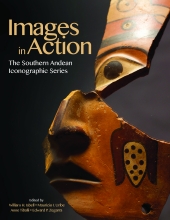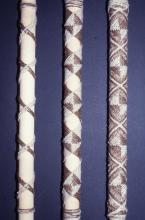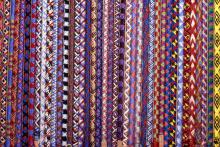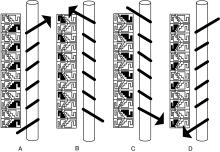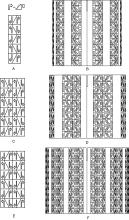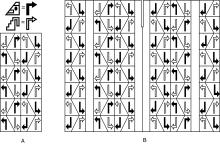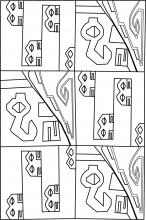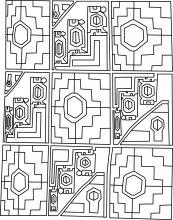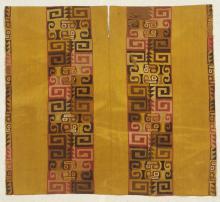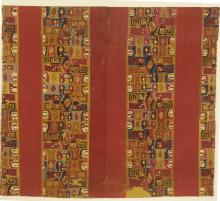Visual database
The technique of helical wrapping in four directions over a core. (a) Three stages in wrapping that produce a diamond design (Frame 1992). (b) Specimens with varied wrapping patterns employing multiple colors.
Specimens with varied wrapping patterns employing multiple colors.
Patterns produced in helical wrapping correspond with the shapes of modules in tunic bands, including the horizontal and diagonal divisions of space in face and fret tunics (left example).
The correspondence between the directional pathways of wrapping and the orientation of stepped frets in a tunic band pattern. (a) Z-Up; (b) S-Up; (c) S-Down; (d) Z-Down.
Format variations in tunics that repeat stepped frets. (a, b) Single band pattern and tunic (TM 91.301); (c, d) patterned band, doubled by translation symmetry, and tunic (TM 1960.12.4); (e, f) patterned band, doubled by mirror symmetry, and tunic (MfVM, Mayrock 245).
The most recurrent pattern on geometric tunics alternates stepped frets and profile faces. (a) Doubled band; (b) tunic (BMA 86.224.144).
Patterns in the face and fret subgroup based on three motifs. (a) Drawing of a tunic detail with face, fret, and interlocked U-shaped animal (Dumbarton Oaks Pre-Columbian Collection, Washington, DC, PC.B.500).
Patterns in the face and fret subgroup based on three motifs. (b) Drawing of a tunic fragment with diamond, face, and stepped block with three animal heads (Museo Nacional de Arqueología, Antropología, e Historia del Perú, RT 3301).
Tunics in the four-part creature subgroup have symmetry patterns generated by mirror symmetry and color patterns based on four color units. (a) The Textile Museum, Washington, DC, 91.533. Acquired by George Hewitt Myers in 1952. See Figures 24.16b and 24.16d for color charts of these tunics.
Tunics in the four-part creature subgroup have symmetry patterns generated by mirror symmetry and color patterns based on four color units. (b) The Textile Museum, Washington, DC, 1962.5.1. Museum Exchange. See Figures 24.16b and 24.16d for color charts of these tunics.
